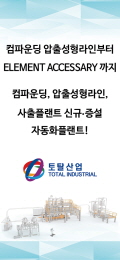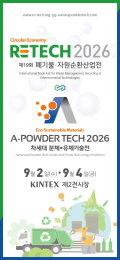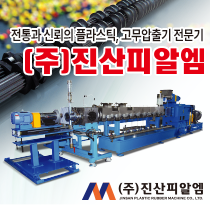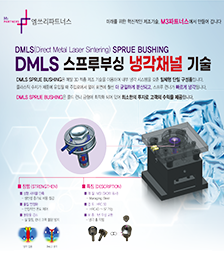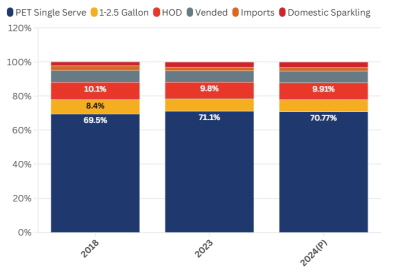Chemical reports
North American polyethylene still growing amid some challenges
North American polyethylene still growing amid some challenges
Chicago — Growth opportunities are still presenting themselves to North American makers of polyethylene resin.
"This is a most exciting time for our industry," David Morgan of Chevron Phillips Chemical Co. said Nov. 1 at Global Plastics Summit 2018 in Chicago. "We've got new applications and new supplies of material."
Morgan is senior vice president of polymers and specialties for CP Chem, which is based in The Woodlands, Texas. CP Chem is one of many firms that have used low-priced U.S. natural gas feedstock to add PE capacity. The firm has built two new PE units in Old Ocean, Texas, each with annual capacity of around 1.1 billion pounds.
Morgan pointed out that CP Chem was the first firm to announce a major North American PE capacity expansion when it did so in 2011. CP Chem's Martech technology also has 80 licensees and accounts for 20 percent of global production of high density PE.
"These [PE] plants are 9-10 times as large as they were 40 years ago, but they have a lower environmental footprint," said Morgan, whose career began in 1979 with Phillips Petroleum. "And the U.S. Gulf Coast gives us an advantage, since it's the most well-equipped petrochemicals hub in the world."
USGC advantages, according to Morgan, include feedstock availability, robust pipelines and storage facilities, rail infrastructure, access to ports and an educated work force. Overall, he said that more than 300 U.S. chemicals investments have been announced since 2010, totaling more than $200 billion in investments.
By 2025, Morgan said, these investments will have created almost 800,000 direct or indirect jobs and almost $340 billion in economic output. But even with a growing global middle class consuming more plastic per capita, Morgan said that challenges remain in the form of global plastic pollution.
"When it comes to plastics in the environment, negative images influence public opinion, even if the costs of alternatives to plastic remain higher," Morgan said. "Single-use plastic bans are on the rise, and even though most ocean plastic pollution comes from 10 rivers in Asia, we need to collaborate on a global basis."
"No one organization or trade group can do it," he added. "Everyone has to have an understanding of what the different options are. We as an industry have done a poor job of letting people know about the benefits of plastics."
"It's not easy to do — it's going to take lot of work — but we're an industry of problem solvers and we can make it work."
In an interview at GPS 2018, Nova Chemicals PE Senior Vice President John Thayer said that North American PE demand growth is "really strong" at 6 percent in 2018. "The market's been more balanced this year," he added.
Calgary, Alberta-based Nova was the first PE firm to add capacity in the recent wave, bringing on a new production line in Joffre, Alberta, in late 2016. Nova plans to add a new PE line in Sarnia, Ontario, by the end of 2021 and is part of the Bayport Polymers joint venture that will open a new PE unit in Bayport, Texas, also in 2021.
"We're building in North America to supply global demand," said Thayer, who's been with Nova since 1997. "When you look at per capita consumption of polyethylene, there are a lot of great opportunities."
Nova is seeing end-market growth in both durables and flexibles, according to Thayer. E-commerce is creating needs for new types of packaging, he said, and PE pouches are becoming used more widely for products ranging from sugar to pet food.
On the durable side, the need for infrastructure investment is leading to growth in HDPE pipe. Interest in sustainability and lightweighting also are increasing interest in Nova's PE materials, Thayer said.
Nova in August took a step toward reducing plastic ocean debris when it pledged to invest almost $2 million during the next three years to prevent plastic debris from reaching the ocean.
The investment supports Project Stop, a new global initiative to reduce marine plastic pollution, especially in countries with high leakage of plastics into our oceans.Nova's investment will support the first city partnership in Muncar, Indonesia, a coastal fishing community.
Project Stop was co-created in 2017 by materials firm Borealis — a sister company of Nova's — and SYSTEMIQ, a sustainable land use and energy firm. Nova may invest in two other Indonesian cities as well, Thayer said.
"We need to train communities in how to handle waste and find markets for recycled products," he added. "And we need a full supply chain approach to this. We want this to be an example for what needs to happen across Asia."
At GPS 2018, IHS Markit analyst Nick Vafiadis provided an update of the regional PE field. He said that some North American capacity additions that had been delayed because of Hurricane Harvey and other factors now are fully operational, and more are expected during 2019.
The ongoing tariff fight between the U.S. and China caused some PE exports from the U.S. to be rerouted during 2018, Vafiadis said. The issue of sustainability gained more traction in 2018 as well, he added, and could be a challenge to PE makers in 2019 if more bans take hold.
The global PE market currently has a surplus, but demand is expected to grow at a 4.5 percent annual rate through 2023. Vafiadis described current market conditions as "pretty healthy," but he added that PE demand "could be threatened" by external factors.
North American operating rates for low density PE are around 92 percent, with HDPE operating rates around 90 percent and those for LLDPE lower at 84 percent. Ultimately, Vafiadis said that he expects around 20 billion pounds of new PE capacity to be added in North America in the 2016-22 period.
"We've been talking about a [PE] renaissance for some time," he said. "And now shale gas has propelled North American [profit] margins higher than western Europe and southeast Asia."
Vafiadis added that the wave of new PE capacity in North America has been "a net win for [North American] processors in pricing and demand."
"Domestic [PE] sales are nine percent ahead of where they were [in 2017]," he said. "That's s solid evidence that demand is growing and that processors are benefiting. At NPE, we talked to a lot of processing machinery companies who had backlogs of orders."

